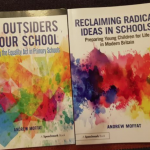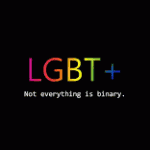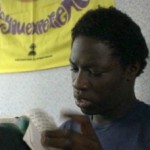![]() It is a method best used in primary or early years, especially as language and concept are not developed enough to go into the details of sexual orientation and gender identity. Essential ‘usualising’ can occur at any point. It is to be used to prepapre children for the detailed learning when a subject is ‘actualised’ e.g.describe/analysed. ‘Usualising’ is also based on thae idea that before we can deconstruct something effectively and rationally, the ‘whys’ and the ‘hows’ of a subject, our learners must be acclimatised to the existence of the subject. It is perhaps why the ‘gay’ lesson could often be problematic. As an isolated lesson or two on LGBT, children were expected to accept the acceptability of same-sex relationships, before they fully accepted LGBT people as meaningful and not ‘mythical’ (on the periphery of their experience to such an extent as to be rendered invisible). Pupils with little experience or knowledge of LGBT people found the sudden appearance of LGBT lives in the classroom incredibly disorientating, and this often manifested in challenging behaviour (fear, frustration, distraction) which made some teachers even more wary of tackling the issues.
It is a method best used in primary or early years, especially as language and concept are not developed enough to go into the details of sexual orientation and gender identity. Essential ‘usualising’ can occur at any point. It is to be used to prepapre children for the detailed learning when a subject is ‘actualised’ e.g.describe/analysed. ‘Usualising’ is also based on thae idea that before we can deconstruct something effectively and rationally, the ‘whys’ and the ‘hows’ of a subject, our learners must be acclimatised to the existence of the subject. It is perhaps why the ‘gay’ lesson could often be problematic. As an isolated lesson or two on LGBT, children were expected to accept the acceptability of same-sex relationships, before they fully accepted LGBT people as meaningful and not ‘mythical’ (on the periphery of their experience to such an extent as to be rendered invisible). Pupils with little experience or knowledge of LGBT people found the sudden appearance of LGBT lives in the classroom incredibly disorientating, and this often manifested in challenging behaviour (fear, frustration, distraction) which made some teachers even more wary of tackling the issues.
At what age should ‘usualising’ start?
Recent Videos
Recent Posts
- KS4 English – Shakespeare, Sonnets and Sexuality
 NO OUTSIDERS IN OUR SCHOOLS Teaching the Equality Act in Primary Schools & RECLAIMING RADICAL IDEAS IN SCHOOLS Preparing Young Children for Life in Modern Britain By Andrew Moffat
NO OUTSIDERS IN OUR SCHOOLS Teaching the Equality Act in Primary Schools & RECLAIMING RADICAL IDEAS IN SCHOOLS Preparing Young Children for Life in Modern Britain By Andrew Moffat PSHE – Alphabet Soup
PSHE – Alphabet Soup KS3 – PSHE – Shark Bait
KS3 – PSHE – Shark Bait KS4 – PSHE Omar: Young, Gifted and Gay 2 Part 1
KS4 – PSHE Omar: Young, Gifted and Gay 2 Part 1
Tags
actualising
AIDS
BAME
Black
boys
bullying
Citizenship
discrimination
english
family
feature
gay
Gender
gender variance
geography
girls
graded
hand holding
Haring
History
HIV
homophobia
internalised discrimination
Intersectionality
KS1
KS2
KS3
ks4
lesbian
LGB rights
LGBT
love
marriage
Music
Poetry
PSHE
religion
sen
SRE
stereotype
stereotypes
stonewall
Toolkit
Trans
usualising
SUBMIT YOUR OWN
If you have materials you wish to add to this site we welcome submissions - please click here to get in touch with us.
COPYRIGHT STATEMENT
Please note use of materials posted on the website are for educational purposes only and any other use could result in an infringement of copyright.
If copyright is claimed in any photograph which appears on this website, please contact us and we will happily remove it.
If copyright is claimed in any photograph which appears on this website, please contact us and we will happily remove it.


